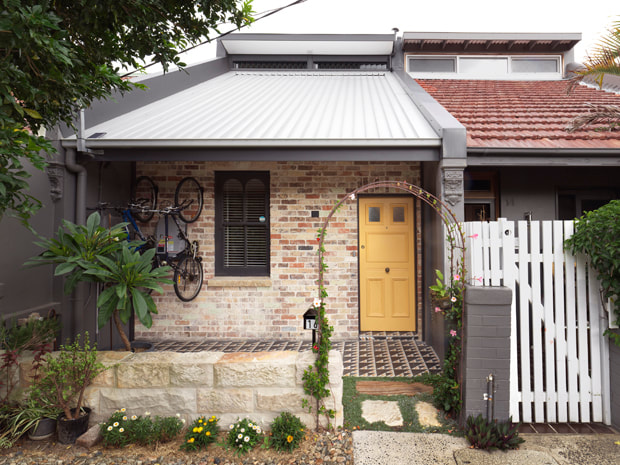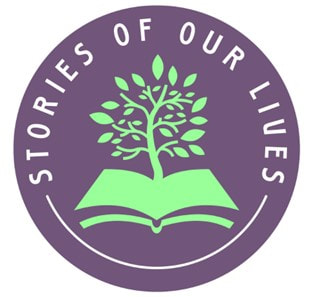|
 Akoonah is an aboriginal word meaning 'running waters'. Akoonah is an aboriginal word meaning 'running waters'. For example, the 1915 Sands Directory for Woollahra lists properties with names such as Willesden, Kirkdale, Brighton, Stratherne and Linwood; all referring to places in the UK. There is a Te Aroha named after a NZ town. Other names such as 'the Glen' indicate nostalgia for Scotland. More fun is 'Iolanthe' named after a comic Gilbert and Sullivan Opera of 1882. My own Great Grandfather, ROBERT HENRY MORRIS, and his family lived in a house on Lennox St named 'Dulce Domun' meaning 'Sweet Home' in Latin. Aboriginal words were also freely appropriated for naming houses. Mia-Mia, (shelter), Karinya (peaceful place) and Cooinda (happy place) were a few that were regularly used. My Great Grandmother EDITH EMILY BAX lived in Alt St, Waverley and she named her house which she built, 'Amaroo' which translates to 'Beautiful Place'. Plaques with names were often attached to the front of the house. Many of these still survive. People still today choose house names and erect signs as a nod to nostalgia.  As an aside, original outside taps can often help to indicate the year a house was built, particularly in NSW. They were usually inscribed with the year they were manufactured and approved by the Metropolitan Water Sewerage & Drainage Board (MWSB). The side or the curved part of the tap are usually where you can find the stamped year. On a fun finishing note, I recall a trip to Tasmania, many years ago, where we came across Doo Town. Nearly every home was a pun on Doo; Make Doo, This will Doo, D oo come in, Just Doo it, Love Me Doo, Much-A-Doo etc. Do you want to know more about your house? There is a plethora of material available and local councils are a wonderful resource. Trove is a wonderful place to start. I have found so many fabulous tid bits about houses my ancestors have lived in. It can really bring the house and its inhabitants to life. Typing the address into Trove is a good starting point. Also a good facebook group to join, 'Our old house'. Here are some links: https://trove.nla.gov.au/ www.library.gov.au/learn/adults/lifelong-learning/how-trace-history-your-house www.facebook.com/groups/1706748102970911/posts/3401609216818116/
0 Comments
 TENTERFIELD Was originally inhabited by the Jukumbal* people, (also known as Yukumbal), as well as the Bundjalung and Kamilaroi people. Tenterfield was known as Moombilleen, often noted as meaning 'place of wild honey.' However there is also reference to the word Moom meaning death and billeen meaning small creek, which could have referred to the existing creek, dry in Summer and flowing in Winter. *I want to acknowledge the dark history of brutality, massacre and the decimation of culture of the traditional owners of the region. As is the history of most Australian towns and regions. I will write more about this in the future and will endeavour to bring a truth telling light to the history of all the places my ancestors settled. The first premier of NSW , Sir Stewart Alexander Donaldson, (along with Sir Robert Ramsay Mackenzie), established a property in Tenterfield running around 18,000 sheep on 100,1000 acres. He named the property, Tenterfield Park' after his aunt's property in Scotland. A tenterfield refers to a Scottish practice of using a field to hang sheep fleece to stretch and dry on tenters; frames with hooks.  View of Parramatta, watercolour 1839 By Conrad Martens View of Parramatta, watercolour 1839 By Conrad Martens PARRAMATTA Parramatta's name comes from the Dharug word Burramatta or Baramada, which is commonly translated as "place where the eels lie down" or "head of waters". This name reflects the area's significance as a meeting and gathering place for the traditional Burramattagal clan of the Dharug people who relied on the rich food sources from the Parramatta River, particularly eels. LISMORE Many pastoral stations were established and licensed in the were granted in the early 1840s in the lower reaches of the Richmond River. In 1843 an attempt was made by Captain Dumaresq to establish a station with 23,000 sheep on the Northern arm of the Richmond. The subtropical climate was problematic for grazing and the property was sold to William and Jane Wilxon in 1845. They named it Lismore, after a small island in Loch Linnhe in the Scottish highlands. In 1855 a surveyor was ordered to determine a suitable site for a township at the confluence of the Wilson and Richmond Rivers. The site chosen was Wilson’s homestead paddock and this site was proclaimed the Town of Lismore in the Government Gazette on 1 May 1856. The traditional owners of Lismore are the Widjabul/Wia-bal people, who are part of the larger Bundjalung nation. The Bundjalung nation's traditional lands stretch from the Clarence River in the south to the Logan River in Queensland. The Widjabul/Wia-bal are the specific group of the Bundjalung nation reported to have inhabited the Lismore region. |
AuthorWrite something about yourself. No need to be fancy, just an overview. ArchivesCategories |





 RSS Feed
RSS Feed
